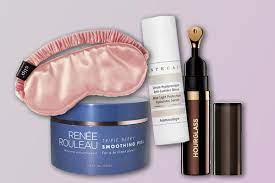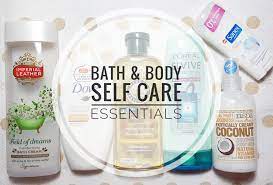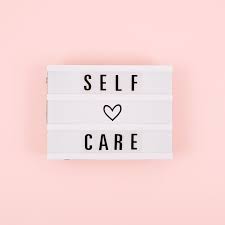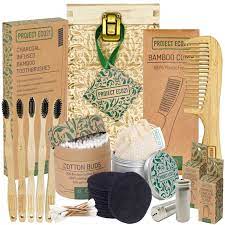Exquisite Elegance: Embrace the World of Premium Home Decor
Premium Home Decor: Elevating Your Living Space
Your home is your sanctuary, a place where you can escape from the outside world and truly be yourself. It’s where memories are made, and moments are cherished. So why not make it truly special with premium home decor?
Premium home decor goes beyond the ordinary. It’s about creating a space that reflects your unique personality and style while exuding elegance and sophistication. From luxurious furniture to exquisite accessories, every element is carefully selected to transform your living space into a haven of beauty and comfort.
One of the key aspects of premium home decor is quality craftsmanship. Each piece is meticulously crafted by skilled artisans, using only the finest materials. From hand-carved wooden furniture to intricately woven textiles, every detail is thoughtfully considered to ensure longevity and timeless appeal.
When it comes to premium home decor, attention to detail is paramount. Whether it’s the intricate patterns on a rug or the delicate embellishments on a lampshade, every element adds depth and character to your space. These details create an ambiance that is both welcoming and refined, making you feel like you’ve stepped into a five-star retreat.
Another hallmark of premium home decor is its ability to evoke emotion. The right combination of colours, textures, and patterns can create a sense of tranquillity, warmth, or even excitement within a room. It’s about curating an atmosphere that resonates with you on a deeper level – one that brings joy and serenity into your everyday life.
Investing in premium home decor not only enhances the aesthetics of your living space but also adds value to your property. These pieces are designed to stand the test of time both in terms of style and durability. They become heirlooms that can be passed down through generations, carrying with them stories and memories.
Moreover, premium home decor offers endless possibilities for personalization. Whether you prefer a classic or contemporary style, there are countless options to suit your taste. From statement furniture pieces to unique art installations, you can create a space that is truly one-of-a-kind and reflects your individuality.
So, if you’re ready to elevate your living space to new heights, consider investing in premium home decor. Surround yourself with beauty, craftsmanship, and elegance that will not only transform your home but also uplift your spirit. Create a sanctuary that is a true reflection of who you are and indulge in the luxury of fine living. After all, you deserve nothing but the best when it comes to your home.
9 Frequently Asked Questions About Premium Home Decor in English (UK)
- What are the best home decor stores?
- How can I make my home look more luxurious?
- Where can I find high-end home decor pieces?
- What are the latest trends in premium home decor?
- How do I choose the right fabric for my upholstery and curtains?
- What tips should I follow when buying luxury furniture?
- How can I add a modern touch to my living room without breaking the bank?
- Are there any affordable options for premium wall art and accessories?
- What type of lighting is best for creating a warm, inviting atmosphere in my home?
What are the best home decor stores?
When it comes to finding the best home decor stores, there are several options that offer a wide range of products to suit various styles and preferences. Here are some popular choices:
- IKEA: Known for its affordable and stylish furniture, IKEA offers a vast selection of home decor items, from lighting fixtures to textiles and accessories. They provide functional designs that cater to different tastes and budgets.
- West Elm: With a focus on modern and contemporary aesthetics, West Elm is a go-to store for those seeking sleek and on-trend home decor. From furniture to bedding, their products are known for their quality craftsmanship and unique designs.
- Anthropologie: Anthropologie offers a bohemian-chic style with an eclectic mix of furniture, textiles, and decorative items. Their products often feature intricate details, vibrant colours, and whimsical patterns that add character to any space.
- Crate & Barrel: Known for their timeless designs and high-quality products, Crate & Barrel offers a wide range of home furnishings and decor items. From classic furniture pieces to stylish tableware and accessories, they cater to various design aesthetics.
- Wayfair: Wayfair is an online retailer with an extensive selection of home decor items from numerous brands. They offer everything from furniture to rugs, lighting fixtures to wall art, making it easy to find something for every room in your home.
- Restoration Hardware: Restoration Hardware specializes in luxury home furnishings that exude elegance and sophistication. Their collections feature timeless designs inspired by classic styles while incorporating modern elements.
- HomeGoods: If you’re looking for affordable yet stylish home decor finds, HomeGoods is worth exploring. They offer a constantly changing selection of discounted items ranging from furniture to decorative accents, allowing you to discover unique pieces at great prices.
Remember that the “best” store ultimately depends on your personal style preferences and budget. It’s always worth exploring local boutiques or online marketplaces to discover hidden gems and support smaller businesses.
How can I make my home look more luxurious?
Creating a luxurious and upscale ambiance in your home doesn’t necessarily require a complete overhaul or breaking the bank. With some thoughtful attention to detail and strategic design choices, you can elevate the look and feel of your space. Here are some tips to make your home look more luxurious:
- Declutter and Simplify: A clutter-free environment instantly creates a sense of luxury. Clear out unnecessary items and keep surfaces clean and organized. Minimalism is key when aiming for a high-end aesthetic.
- Invest in Quality Furniture: Choose furniture pieces made with premium materials such as leather, velvet, or solid wood. Opt for timeless designs that exude elegance and sophistication. Comfort is equally important, so look for pieces that offer both style and functionality.
- Enhance Lighting: Good lighting can dramatically transform the atmosphere of a room. Incorporate a combination of ambient, task, and accent lighting to create layers of illumination. Consider adding statement chandeliers or elegant wall sconces to add a touch of glamour.
- Use Rich Fabrics: Introduce luxurious fabrics like silk, velvet, or cashmere into your space through curtains, throw pillows, or upholstery. These textures instantly add depth and opulence to any room.
- Add Metallic Accents: Incorporate metallic accents such as gold or silver through accessories like mirrors, lamps, or decorative objects. These touches of shine lend an air of sophistication and glamour.
- Focus on Details: Pay attention to small details that can make a big impact – think decorative moldings, intricate hardware on cabinets or doors, or ornate trimmings on curtains. These finer touches can elevate the overall aesthetic.
- Display Artwork: Hang artwork that speaks to your personal taste and complements the overall style of your space. Large-scale paintings or sculptures instantly add a sense of luxury and refinement.
- Upgrade Textiles: Invest in high-quality bedding with sumptuous sheets and plush duvets. Add luxurious rugs to your floors, opting for materials like wool or silk. These soft textiles create a cozy and indulgent atmosphere.
- Incorporate Natural Elements: Introduce natural elements such as fresh flowers, indoor plants, or a cascading waterfall feature. These elements bring life and a sense of tranquility to your space.
- Pay Attention to Colour Palette: Choose a sophisticated colour palette with neutral tones like creams, beiges, greys, or soft pastels. These hues create an elegant and timeless backdrop for your decor.
Remember, creating a luxurious home is all about attention to detail and selecting quality pieces that reflect your personal style. By implementing these tips, you can transform your space into a haven of luxury and refinement.
Where can I find high-end home decor pieces?
Finding high-end home decor pieces can be an exciting adventure. Here are a few places where you can explore and discover premium options:
- Luxury Furniture Retailers: Visit upscale furniture stores that specialize in high-end home decor. These retailers often offer a curated selection of luxurious furniture, accessories, and decor items. They may have showrooms where you can experience the quality and craftsmanship firsthand.
- Designer Boutiques: Explore designer boutiques that focus on home decor. These establishments often feature exclusive collections from renowned designers and brands. From unique lighting fixtures to exquisite textiles, you can find exceptional pieces that will elevate your living space.
- Online Marketplaces: Many online marketplaces cater to luxury home decor enthusiasts. Websites like 1stdibs, Chairish, and LuxDeco offer a wide range of premium furniture, art, accessories, and antiques from around the world. These platforms provide convenient access to a vast selection of high-quality pieces.
- Art Galleries: Consider visiting art galleries that display both fine art and decorative objects for the home. Many galleries showcase sculptures, paintings, ceramics, and other artistic creations that can serve as statement pieces in your living space.
- Auction Houses: Keep an eye on auction houses that specialize in fine art and antiques. They often hold auctions featuring rare and collectible home decor items from various periods and styles.
- Interior Design Trade Shows: Attend interior design trade shows or exhibitions where luxury brands showcase their latest collections. These events allow you to explore a wide range of high-end home decor options all in one place.
- Custom Furniture Designers: If you desire truly bespoke pieces, consider working with custom furniture designers or artisans who can create unique items tailored to your preferences and specifications.
Remember to research each option beforehand to ensure they align with your style preferences and budget considerations. Whether you prefer shopping in person or online, these sources will help you find the perfect high-end home decor pieces to transform your living space into a haven of luxury and style.
What are the latest trends in premium home decor?
The world of premium home decor is constantly evolving, with new trends emerging each year. Here are some of the latest trends in premium home decor that can help you stay ahead of the curve:
- Natural and Sustainable Materials: With a growing emphasis on sustainability, there is a shift towards using natural and eco-friendly materials in premium home decor. From reclaimed wood furniture to organic textiles, these materials add a touch of authenticity and contribute to a more environmentally conscious lifestyle.
- Earthy Tones: Neutral and earthy tones are gaining popularity in premium home decor. Shades like warm beiges, soft browns, and earthy greens create a calming and grounding atmosphere. These colours can be incorporated through furniture, paint choices, or accessories to bring a sense of tranquillity to your space.
- Statement Lighting: Lighting has become an essential element in premium home decor, with an emphasis on unique and eye-catching fixtures. Statement chandeliers, sculptural pendant lights, and artistic floor lamps not only provide illumination but also serve as decorative focal points that elevate the overall aesthetic.
- Maximalism: While minimalism has its charm, maximalism is making a comeback in premium home decor. It embraces bold patterns, vibrant colours, and rich textures to create an opulent and eclectic look. Mixing different styles and layering textures adds depth and visual interest to your space.
- Biophilic Design: Biophilic design focuses on connecting indoor spaces with nature. Incorporating natural elements such as indoor plants, living walls, or large windows that offer views of greenery can create a sense of calmness and improve overall well-being.
- Artisanal Craftsmanship: Handcrafted pieces are highly sought after in premium home decor as they showcase the skill and artistry of talented artisans. From hand-blown glassware to intricately woven textiles, these one-of-a-kind pieces add uniqueness and character to your space.
- Smart Home Integration: As technology continues to advance, integrating smart home features into premium decor is becoming increasingly popular. From voice-controlled lighting to automated window treatments, these innovations offer convenience and enhance the functionality of your living space.
Remember, while trends can inspire and guide your choices, it’s important to select elements that truly resonate with your personal style and preferences. Ultimately, creating a space that reflects your individuality and makes you feel at home is the key to timeless and luxurious home decor.
How do I choose the right fabric for my upholstery and curtains?
Choosing the right fabric for your upholstery and curtains is crucial as it can significantly impact the overall look and feel of your space. Here are some factors to consider when making your selection:
- Durability: Determine the level of durability required based on the intended use of the fabric. For high-traffic areas, opt for fabrics with higher durability ratings, such as synthetic blends or tightly woven materials like canvas or twill. For curtains, consider how often they will be opened and closed to ensure they can withstand regular use.
- Style and Aesthetics: Consider the style and mood you want to create in your space. Fabrics come in a wide range of patterns, textures, and colours. Choose a fabric that complements your existing decor or adds a desired pop of colour or pattern to create visual interest.
- Maintenance: Think about how much time and effort you’re willing to invest in maintenance. Some fabrics require special care, such as dry cleaning or professional cleaning, while others can be easily machine-washed at home. Consider your lifestyle and choose fabrics that align with your maintenance preferences.
- Light Control: If you’re selecting fabric for curtains, consider how much light you want to filter into the room. Sheer fabrics like chiffon or voile allow more light through, while heavier materials like velvet or blackout fabrics offer better light control.
- Privacy: Assess your privacy needs when choosing curtain fabrics. Thicker materials like velvet or heavy cotton provide more privacy by blocking outside views when curtains are closed.
- Climate Considerations: Take into account the climate of your location when selecting upholstery and curtain fabrics. In humid environments, breathable natural fibers like cotton or linen can help prevent moisture buildup, while in colder climates, heavier materials like wool can add warmth to a space.
- Allergies: If you or anyone in your household has allergies, consider hypoallergenic fabrics that are less likely to trap dust, pet dander, or allergens. Fabrics like microfiber or leather can be good options for those with allergies.
- Budget: Set a budget for your upholstery and curtain fabrics. Prices can vary significantly depending on the type of fabric and quality. Consider the value and longevity of the fabric when making your decision.
Remember to request fabric samples whenever possible, as this will allow you to see and feel the material in your space before making a final decision. Ultimately, choosing the right fabric involves finding a balance between aesthetics, functionality, durability, and personal preferences.
What tips should I follow when buying luxury furniture?
When it comes to buying luxury furniture, there are several tips to keep in mind to ensure you make the right investment. Here are some key considerations:
- Define your style: Before starting your search, have a clear understanding of your personal style and the overall aesthetic you want to achieve in your space. This will help you narrow down your options and make more informed choices.
- Research reputable brands: Luxury furniture is often associated with well-known brands that have a reputation for quality and craftsmanship. Take the time to research and explore different brands known for their expertise in creating high-end furniture.
- Assess quality and craftsmanship: Examine the materials used and the level of craftsmanship involved in creating each piece. Look for solid construction, attention to detail, and durable materials that will stand the test of time.
- Consider comfort: While aesthetics are important, don’t overlook comfort. Sit on sofas, chairs, or lounge on beds to ensure they provide both style and comfort that suits your needs.
- Evaluate functionality: Luxury furniture should not only be beautiful but also functional. Consider how each piece will fit into your lifestyle and serve its intended purpose.
- Seek sustainable options: If sustainability is important to you, look for luxury furniture made from eco-friendly materials or produced using sustainable practices.
- Testimonials and reviews: Read customer reviews and testimonials about specific pieces or brands you’re interested in to gain insights into others’ experiences with their products.
- Set a budget: Determine a budget range before you start shopping to avoid overspending or getting carried away by extravagant options.
- Visit showrooms or request samples: Whenever possible, visit showrooms or request fabric samples or material swatches to get a better sense of the quality, texture, and finishes of the furniture pieces you’re considering.
- Consult with interior designers: If you’re unsure about making the right choices, consider consulting with interior designers who specialize in luxury furniture. They can provide valuable guidance and help you create a cohesive and stylish space.
By following these tips, you’ll be well-equipped to make informed decisions when purchasing luxury furniture that aligns with your style, meets your quality expectations, and enhances the overall aesthetic of your home.
How can I add a modern touch to my living room without breaking the bank?
Adding a modern touch to your living room doesn’t have to be expensive. Here are some budget-friendly tips to help you achieve a contemporary look without breaking the bank:
- Declutter and Rearrange: Start by decluttering your living room and removing any unnecessary items. Rearrange your furniture to create an open and spacious layout that reflects a modern aesthetic.
- Paint and Accent Walls: A fresh coat of paint can instantly transform a space. Choose neutral or cool-toned colours like greys, whites, or pastels to create a modern backdrop. Consider adding an accent wall with a bold colour or wallpaper for added visual interest.
- Lighting: Update your lighting fixtures to more modern designs. Opt for sleek, minimalist pendant lights or floor lamps with clean lines. Adding dimmer switches can also help create different moods in the room.
- Statement Furniture: Invest in one or two key pieces of furniture that have a modern design aesthetic. Look for clean lines, geometric shapes, and materials like metal, glass, or acrylic. This can be a statement sofa, coffee table, or accent chair that becomes the focal point of the room.
- Textiles and Accessories: Update your soft furnishings such as curtains, throw pillows, and rugs with modern patterns and textures. Choose geometric prints or abstract designs in neutral colours for a contemporary touch.
- Wall Art: Hang contemporary artwork or create a gallery wall using frames with sleek designs. You can find affordable prints online or even create your own artwork using DIY techniques like abstract painting.
- Plants and Greenery: Bring nature indoors by adding plants and greenery to your living room. Plants not only add freshness but also contribute to a modern aesthetic with their organic shapes and textures.
- Mirrors: Place mirrors strategically to reflect light and create an illusion of space in your living room. Choose mirrors with minimalist frames or unique shapes for added visual interest.
- Smart Storage Solutions: Invest in stylish storage solutions that help keep your living room organized and clutter-free. Look for multi-functional furniture pieces like ottomans with hidden storage or floating shelves for displaying decorative items.
- DIY Projects: Get creative and embark on DIY projects to add unique, modern elements to your living room. This could include upcycling old furniture, creating artwork, or repurposing everyday objects into decorative pieces.
Remember, adding a modern touch to your living room is about creating a cohesive and curated look. With a little creativity, attention to detail, and smart shopping choices, you can achieve a contemporary aesthetic without breaking the bank.
Are there any affordable options for premium wall art and accessories?
Absolutely! While premium home decor often carries a higher price tag, there are still affordable options available for premium wall art and accessories. Here are a few tips to help you find the perfect balance between quality and affordability:
- Research Online: Explore various online marketplaces and websites that specialize in home decor. Many of them offer a wide range of premium wall art and accessories at discounted prices. Keep an eye out for sales, promotions, and clearance sections where you can find great deals on high-quality pieces.
- Local Artisans and Crafters: Look for local artists, artisans, and crafters in your area. They often create unique and handcrafted pieces at more affordable prices compared to mass-produced items. Supporting local talent not only helps you find affordable options but also adds a personal touch to your home decor.
- DIY Projects: Consider taking up some do-it-yourself projects for wall art and accessories. With a little creativity and some basic materials, you can create stunning pieces that mimic the look of premium decor at a fraction of the cost. There are numerous online tutorials and inspiration available to guide you through the process.
- Thrift Stores or Second-hand Markets: Don’t overlook thrift stores or second-hand markets when searching for premium wall art and accessories on a budget. You might stumble upon hidden gems that have been gently used or are in excellent condition but sold at significantly lower prices than their original retail value.
- Mix High-End with Affordable: Another approach is to mix high-end pieces with more affordable alternatives. Invest in one or two statement pieces that truly capture your style while complementing them with less expensive items that still maintain good quality standards.
Remember, affordability doesn’t always mean sacrificing quality or style. By being resourceful, exploring different options, and thinking creatively, you can find premium wall art and accessories that fit within your budget without compromising on the overall aesthetic appeal of your space.
What type of lighting is best for creating a warm, inviting atmosphere in my home?
When it comes to creating a warm and inviting atmosphere in your home, lighting plays a crucial role. The right lighting can transform the mood of a space, making it feel cozy and welcoming. Here are a few types of lighting that are best suited for achieving that warm ambiance:
- Soft Ambient Lighting: Use soft ambient lighting as the foundation for your space. This can be achieved through the use of ceiling-mounted fixtures, such as chandeliers or pendant lights, with warm-toned bulbs. Opt for fixtures that allow you to dim the lights, giving you control over the intensity and creating a more intimate setting.
- Warm-Toned Bulbs: Choose light bulbs with warm tones to create a cozy atmosphere. Look for bulbs labeled as “warm white” or “soft white,” which emit a yellowish glow rather than the harsh white light of cooler-toned bulbs. LED bulbs are energy-efficient options that come in warm tones and can last longer.
- Table Lamps and Floor Lamps: Incorporate table lamps and floor lamps into your living spaces to add layers of lighting and create a soft, inviting glow. Place them strategically in corners or near seating areas to provide task lighting while also contributing to the overall ambiance.
- Candlelight: There’s nothing quite like the flickering glow of candles to create an intimate atmosphere. Use scented candles in decorative holders throughout your home to add warmth and fragrance to the space. However, always remember to practice safety precautions when using open flames.
- Accent Lighting: Consider incorporating accent lighting to highlight specific areas or objects in your home, such as artwork, shelves with decorative items, or architectural features like exposed brick walls or alcoves. Use adjustable spotlights or wall sconces with warm-toned bulbs to draw attention and create visual interest.
- Dimmers: Installing dimmer switches allows you to adjust the brightness levels of your lights according to different occasions or moods. Lowering the lights can instantly create a more intimate and cozy atmosphere, perfect for relaxing evenings or entertaining guests.
Remember, the key to achieving a warm and inviting atmosphere lies in the combination of different lighting elements. Experiment with various layers of lighting, such as overhead, task, and accent lighting, to create depth and ambiance in your space.









